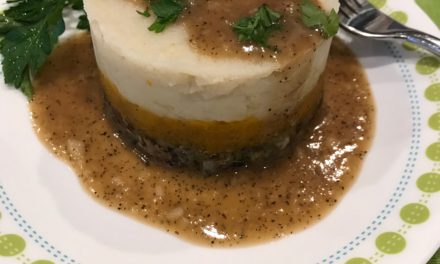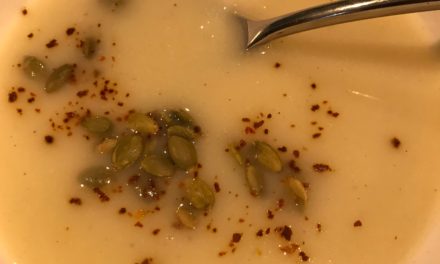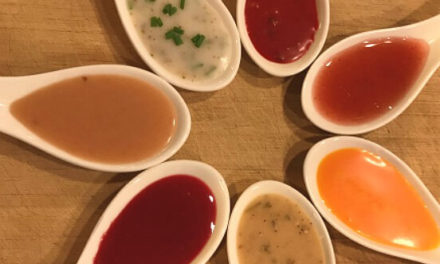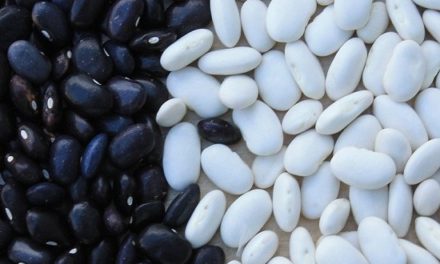Should seaweed be in your diet?
If you’ve ever been to the beach and had to wade through seaweed you would wonder why anyone would ever want to eat it!
Well, sea vegetables are some of the most nutritious foods on the planet. Not only are you getting a plethora of vitamins and minerals, the seaweed and algae actually absorbs heavy metals like mercury and aluminum from your body.
I’ve incorporated but a few varieties in my kitchen, mostly in my Japanese cuisine but I’m branching out. I might try some Gomasio in a “seafood” chowder or broth. A little hijiki could season a pasta dish to impart a briny sea flavor. Some nori can replace anchovies in Green Goddess dressing.
Justin Warner wrapped fresh coconut wrapped in nori to mimic a fried fish dinner on Guy’s Grocery Games. Judges compared it to flaky halibut! I wish I could find that episode again!
Kombu
Kombu is available in dried sheets. A little goes a long way so a package may last awhile.
I personally do not like the texture of it so I discard it after using it to infuse flavor to broth. However, it can be shredded and added to rice or included in a salad.
You can take the “musical effects” of beans by simply tossing in a 3″ X 5″ piece in a pound of dried beans when you cook them. Not only does it work, the kombu melts into them giving an almost meaty flavor to the beans.
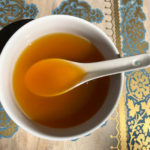
I use kombu in place of bonito flakes to make Dashi, a Japanese style broth. The broth can be used for miso soup, a stock for a stir fry or base for any other type of soup.
The broth is easy to make. 2 quarts of water, a sheet of kombu and 6 dried shitake mushrooms makes a flavorful broth you can use with any of your Japanese dishes.
Wakame
Wakame is available dried and hydrates within minutes once added to water or broth. Make a quick side salad of wakame, mirin, ginger and garlic. I like it topped with umeboshi plum vinegar and ginger.
Add it to your Miso soup! Crumble it before hydrating because it expands into very large pieces and may be difficult to eat.
If eating a bowl of seaweed does not appeal to you, mix it with spinach! Spinach is really good when it is just slightly blanched and served cold. I add some toasted sesame seeds when I use spinach in a salad.
Hijiki
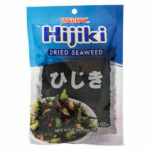
I just happened on this variety.
Like Wakame, it expands considerably when hydrated but takes a little longer to do so. Hijiki has a very fishy taste and smell. The texture is more compact as well. Because of it’s strong flavor, I imagine it could be used in place of anchovies in a Caesar dressing, seafood stock or homemade fish sauce!
Hydrate it in hot water for about ten minutes then strain it through a tea strainer. 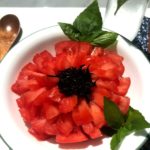
It is a fun addition to salads, sushi and rice dishes.
This beautiful heirloom tomato is topped with hijiki mixed with sesame oil and ginger. It is a quick and easy side to put in a bento box or just enjoy as a quick snack.
Thai basil leaves would go best but sweet globe basil makes a lovely addition as well.
Dulse
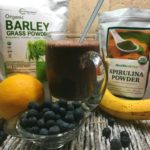
Dulse can be found in a powder form or dried. It is one of the detox ingredients in Anthony William’s heavy metal smoothie.
You can use dulse in place of Kombu. However it is more tender and can be eaten as a snack. The dulse I found needs no hydration.
Sprinkle dulse flakes or powder on soups, salads or rice to impart a flavor of the sea!
Nori
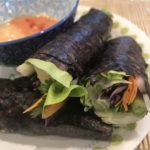
Nori is so much fun! Everyone that eats sushi know about Nori.
Rice spread on nori, topped with an endless variety of fillings, rolled and sliced is familiar to everyone! This type of sushi is referred to a maki.
Wrap it around salad ingredients and serve it with a chili dipping sauce for a quick and healthy snack! When used as a wrap, it is referred to as temaki.
Nori can be cut up and added to cold salads, sprinkled on top of rice dishes, blended in dressings, eaten as a snack. It can be cut into fun shapes if you want to get adventurous.
Spirulina
Spirulina is a blue-green algae commonly used as a dietary supplement.
It may be one of the most nutrient-dense foods on earth…Phycocyanin is the main active compound in spirulina. It has powerful antioxidant, anti-inflammatory properties, and immune-boosting benefits.
The intense color of spirulina can result in some interesting color contract in smoothie bowls. Add a few grains to blended banana for a greenish color or to your blended raspberries for a purple hue. It adds nutrition to your meal and makes it pretty at the same time.
Seasonings and such
Gomasio is a blend of seaweed, sesame seeds and sea salt. Often used as a rice seasoning, you can make your own by blending nori and sesame. (I would leave out the salt). I use Eden brand. You will find it as an ingredient in my Asian parsnip salad. I use the parsnip salad as a filling for my version of WFPB California rolls.
Furikake is another rice seasoning with endless versions. Be careful when purchasing this as many of the flavors have msg and additives you may not want. Look at some of the varieties and make your own blend with seaweed, sesame, hot pepper flakes, wasabi, dried shiso, garlic, ginger or wherever your taste leads you.
I found one furikake with Umeboshi while doing this article. I will let you know how it is!
Agar is basically a WFPB gelatin made from red algae. The gelatin we are familiar with is made from animal bones and cartilage. The texture is different as agar can be a little rubbery. Also agar does not melt at room temperature.
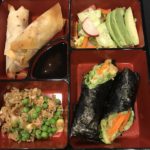
It is easy to include various sea products in your diet.
Make up a bento box to make the experience more fun.
This bento box has a temaki roll, rice, and egg roll and pickled vegetables. Tamari with a little ginger, garlic and sesame oil makes a very simple dipping sauce.
There are so many types of edible sea products, I cannot possibly name them all. However, they aren’t just for eating.
Supplements and more supplements!
Most sea products are so healthy they are made into supplements.
Everyone is aware of Omega oil. Are you aware there is a whole food, plant based version made from sea algae?
Kelp is a main and natural source of essential iodine! I sprinkle into soups but I am not a big fan of the flavor. I would rather take this as a supplement.
Sea Buckthorn berries is another sea product that is found in supplements. I understand from my daughter that it also makes a delicious dessert.
Other noteworthy supplements are spirulina, bladderwrack, sea cucumber, red marine algae and Irish sea moss. Carrageenan is made from Irish Sea Moss and is very controversial addition to processed food. Make certain you research supplements you are not familiar with.
Personal products too? Oh yes!
I’ve been using personal products from the Seaweed Bath Company for years. The detox shower gel is one of my favorite products. The seaweed bath feels as thought it removes fat from your body! The overnight face mask smooths lines and clarifies the skin. The lotion is incredible detox cream for rashes!
Seacrets is another company I am familiar with. It is more expensive than Seaweed Bath Company but there is more variety for personal beauty products. The eye gel is truly special.
Want a natural exfoliant? Put some Himalayan salt in your hand and add some Seaweed Bath gel to it. It is a great skin buffer!
So whether you eat it, supplement with it or use it on your body, sea weed and other sea products should be part of your life!
Sources:
Thrive Market is an online shopping club I use for many products I can’t seem to find at my local stores. They charge a nominal annual fee but offer so many discounts, it more than pays for itself.
Vitacost is another online shopping site I use! It is surprising what I am able to find there. Generally they have the lowest cost and there is no annual fee.


